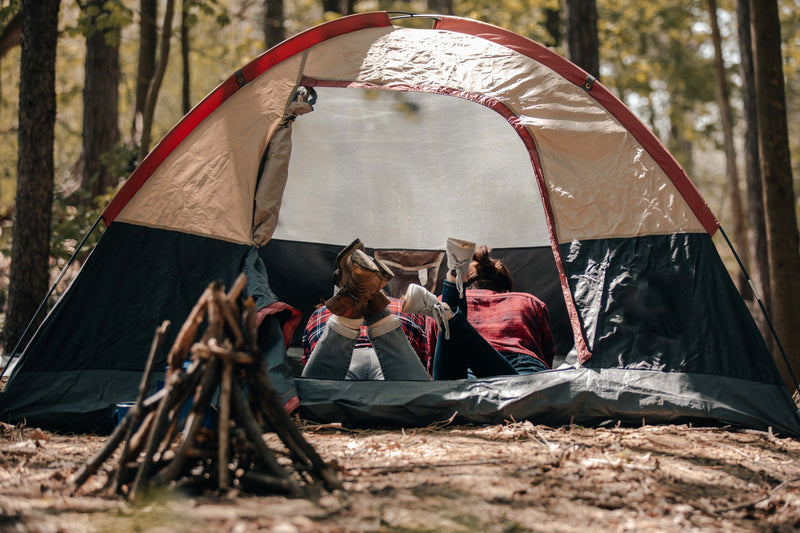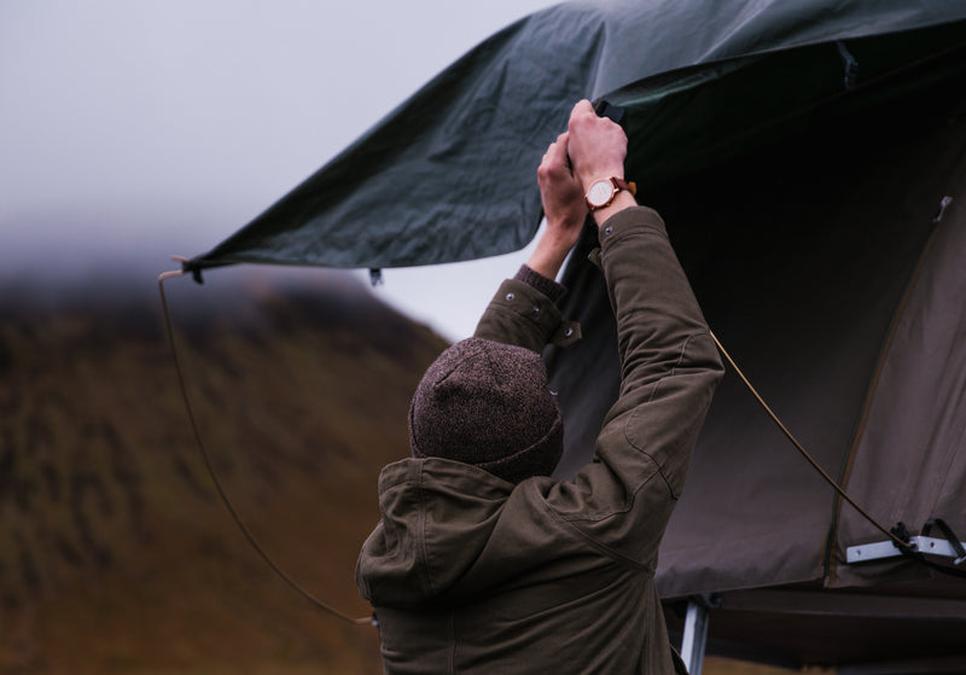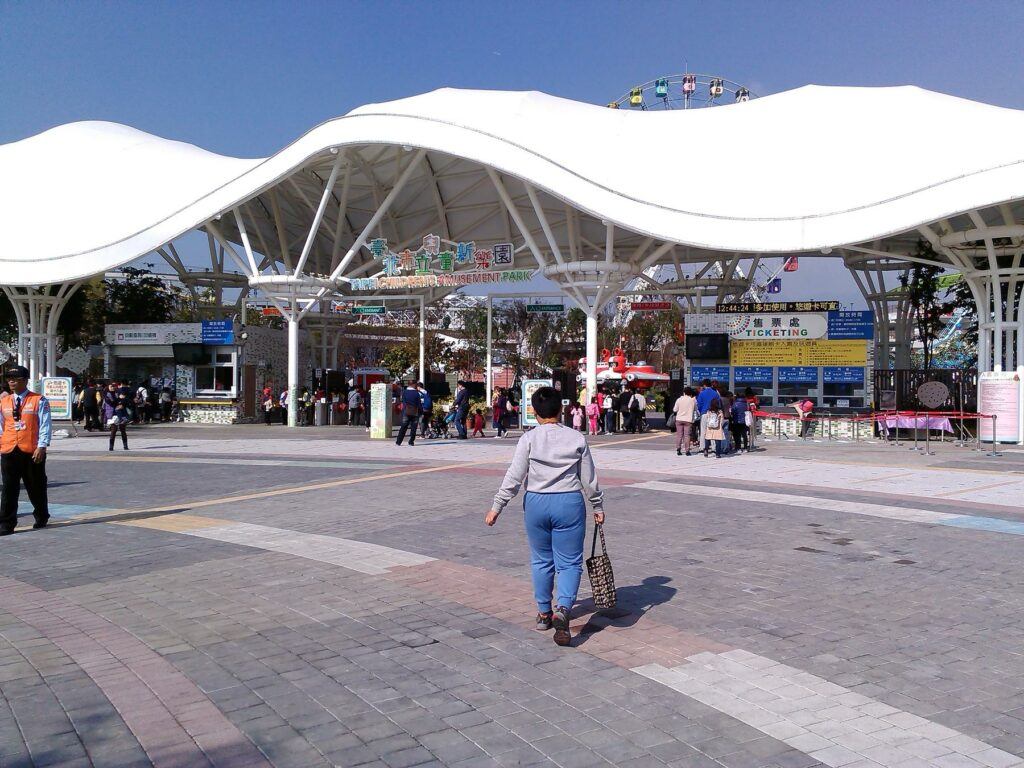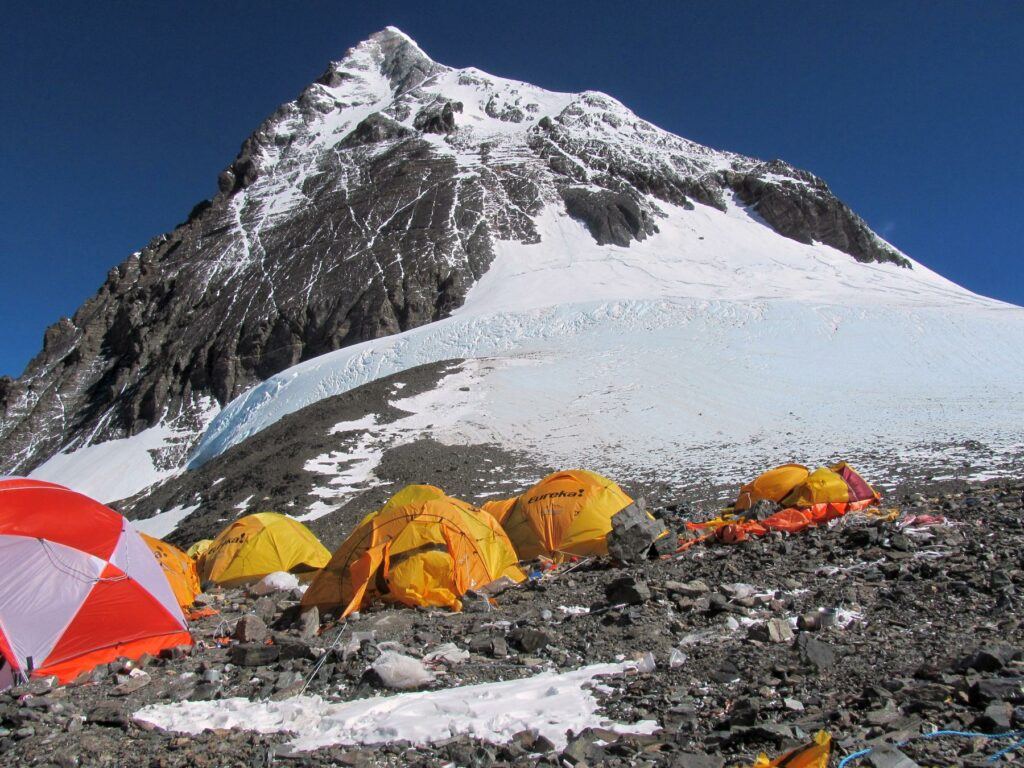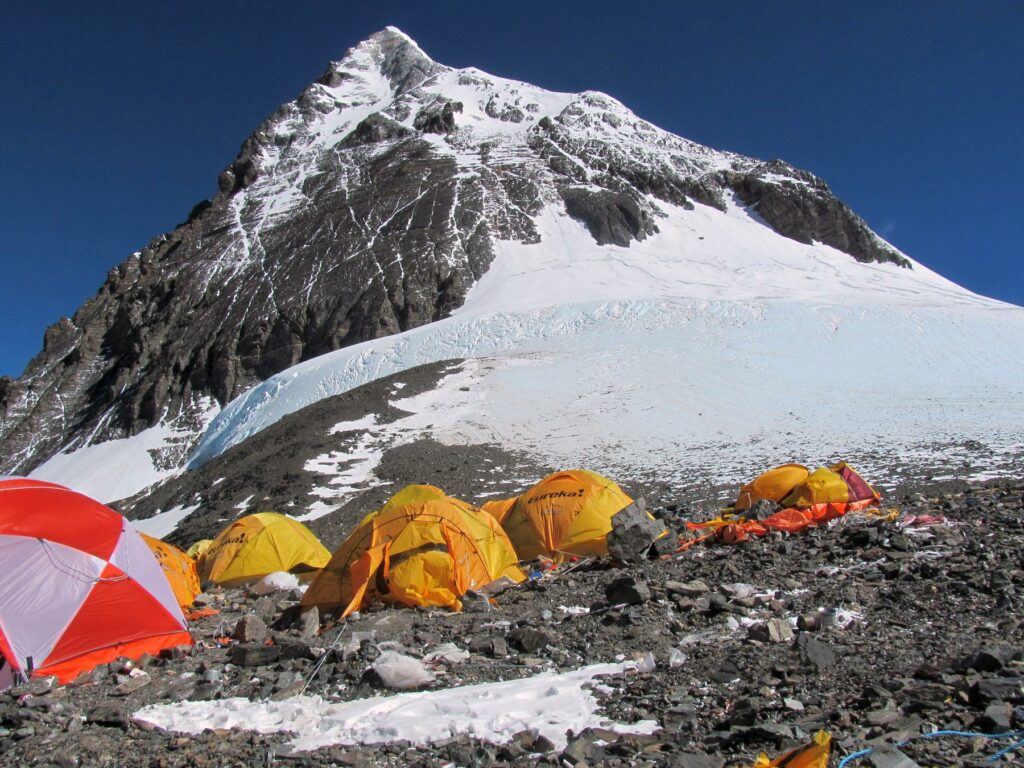Types of Camping Tents
Choosing the right camping tent is crucial for a successful and enjoyable camping experience. The first step in selecting a camping tent is to understand the different types of tents available on the market.
When you are looking for a camping tent, you will come across different types of tents including backpacking, family camping, car camping, and pop-up tents. Each type of tent has its pros and cons, and it is essential to choose the right type based on your camping style, preferences, and needs.
Backpacking Tents
Backpacking tents are lightweight, easy to pack, and designed for hikers who need a compact and portable shelter. These tents are ideal for overnight camping trips and multi-day hikes where you need to carry your gear on your back. Backpacking tents are usually small, with a maximum capacity of two to three people, and come in different shapes, sizes, and materials.
Family Camping Tents
Family camping tents are designed for car camping, base camps, and extended camping trips where you need more space and comfort. These tents are usually larger than backpacking tents, with a capacity of four to six people or more, and come with additional features such as multiple rooms, vestibules, and awnings.
Car Camping Tents
Car camping tents are similar to family camping tents but are designed for car camping and short-term camping trips where you can park your car next to your tent. These tents are usually larger and more spacious than backpacking tents, with a capacity of four to eight people or more, and come with features such as high ceilings, large windows, and easy setup.
Pop-up Tents
Pop-up tents are the easiest and quickest tents to set up and take down. These tents are ideal for festivals, beach camping, and other casual camping activities where you need a simple and hassle-free shelter. Pop-up tents come in different sizes and shapes, and can be used for solo camping or group camping.
In the next section, we will explore the factors you need to consider when choosing a camping tent.
Factors to Consider When Choosing a Camping Tent
Choosing a camping tent can be overwhelming, especially if you are a first-time camper or have specific needs and preferences. To choose the right camping tent, you need to consider several factors that affect the tent’s performance, comfort, and durability. Here are some essential factors to keep in mind when selecting a camping tent:
Space and Comfort
The first factor to consider when choosing a camping tent is the space and comfort you need. The tent’s size depends on your group size, gear, and activities. When selecting a tent, consider whether you need extra space for pets, kids, or equipment. According to REI, there is no standard for per-person tent dimensions, so consider upsizing if you need more space.
Weather Resistance
The second factor to consider when choosing a camping tent is weather resistance. Your tent should protect you from rain, wind, sun, and other weather elements. When selecting a tent, consider the tent’s rainfly, floor, seams, ventilation, and durability. According to OutdoorGearLab, you should choose a tent with a full-coverage rainfly that extends to the ground for maximum protection. Additionally, look for a tent with a waterproof and durable floor that keeps moisture and dirt out.
Ease of Use
The third factor to consider when choosing a camping tent is ease of use. You want a tent that is easy to set up, take down, and pack. When selecting a tent, consider the tent’s design, poles, stakes, and guylines. According to EMS, you should choose a tent with color-coded poles that match the tent’s grommets and clips that attach the tent body to the poles. Additionally, look for a tent with a freestanding capability that allows you to set up the tent without stakes or guylines in case of hard ground or rocky terrain.
Durability
The fourth factor to consider when choosing a camping tent is durability. You want a tent that lasts for multiple camping trips and withstands different weather conditions. When selecting a tent, consider the tent’s materials, poles, zippers, and stitching. According to REI, you should choose a tent with sturdy and lightweight poles that support the tent structure in different weather conditions. Additionally, look for a tent with high-quality zippers that operate smoothly and resist snagging and tearing.
Family Friendliness
The fifth factor to consider when choosing a camping tent is family friendliness. If you camp with kids, pets, or special needs, you want a tent that accommodates their comfort and safety. When selecting a tent, consider the tent’s design, vestibules, and windows. According to OutdoorGearLab, you should choose a tent with multiple rooms and vestibules that provide privacy and space for different activities. Additionally, look for a tent with large windows and doors that allow proper ventilation and natural light.

How to Choose the Right Camping Tent Size
One of the most critical factors to consider when choosing a camping tent is the tent’s size. Your tent’s size depends on your group size, gear, and activities, and choosing the wrong size can affect your comfort and safety. Here are some tips on how to choose the right camping tent size:
Group Size
The first factor to consider when choosing a camping tent size is your group size. The tent’s size should match your group size, plus any extra space you need for gear, pets, or kids. For example, if you are a family of four with two kids and a dog, you may need a six-person tent that provides enough space for everyone to sleep and move comfortably. According to REI, you should consider upsizing your tent if you need more space or have larger gear such as air mattresses, chairs, or tables.
Tent Dimensions
The second factor to consider when choosing a camping tent size is the tent’s dimensions. Tent dimensions refer to the tent’s floor space, peak height, and wall slope. When selecting a tent, consider the tent’s dimensions that match your group size and activities. For example, if you are a tall person or need to stand up inside the tent, you may want a tent with a higher peak height and steeper walls. Additionally, if you need extra storage space or privacy, you may want a tent with multiple rooms or vestibules.
Seasonality
The third factor to consider when choosing a camping tent size is seasonality. The tent’s size should match the season and weather conditions you plan to camp in. For example, if you camp in the summer, you may want a tent with large windows and mesh panels that provide ventilation and airflow. However, if you camp in the winter, you may want a tent with a full-coverage rainfly and a sturdy structure that withstands snow and wind. According to OutdoorGearLab, you should choose a tent that matches the worst weather conditions you expect to encounter.
Tent Capacity
The fourth factor to consider when choosing a camping tent size is tent capacity. Tent capacity refers to the maximum number of people the tent can accommodate. However, tent capacity can be subjective and varies between manufacturers and tent types. When selecting a tent, consider the tent’s capacity that provides enough space and comfort for your group size. Additionally, consider the tent’s layout and design that match your activities and preferences.

Tent Features to Consider
Choosing the right camping tent involves more than just size and weather resistance. There are several tent features to consider that affect your camping experience and comfort. Here are some tent features to consider when selecting a camping tent:
Vestibules
Vestibules are extensions of the tent that provide additional space for gear, shoes, and other equipment. Vestibules help keep the tent interior clean and organized and prevent moisture and dirt from entering the tent. When selecting a tent, consider the number, size, and shape of vestibules that match your gear and activities. According to EMS, vestibules should be large enough to accommodate your gear, but not too large that they block the tent entrance or take too much space.
Windows
Windows are openings on the tent’s walls that allow natural light and ventilation. Windows help regulate the tent temperature, reduce condensation, and provide views of the surrounding nature. When selecting a tent, consider the number, size, and shape of windows that match your preferences and activities. Additionally, look for tents with adjustable windows that allow you to control the airflow and privacy.
Doors
Doors are openings on the tent’s walls that allow entry and exit. Doors should be easy to open and close, with sturdy zippers and loops. When selecting a tent, consider the number, size, and shape of doors that match your group size and preferences. For example, if you camp with kids or pets, you may want a tent with multiple doors that allow them to enter and exit the tent without disturbing others.
Poles
Poles are the tent’s structural elements that hold the tent fabric and shape. Poles can be made of different materials such as aluminum, fiberglass, or carbon fiber. When selecting a tent, consider the pole material, number, and design that match your camping style and needs. For example, if you camp in windy or snowy areas, you may want a tent with sturdy and flexible poles that withstand different weather conditions.
Guy Lines
Guy lines are ropes that attach to the tent and anchor it to the ground. Guy lines help stabilize the tent in windy or uneven terrain and prevent it from collapsing or shifting. When selecting a tent, consider the number, length, and quality of guy lines that match your camping style and needs. Additionally, look for tents with reflective guy lines that increase visibility and safety at night.
Rainfly
Rainfly is a waterproof cover that goes over the tent to protect it from rain, snow, and wind. Rainfly should cover the entire tent and extend to the ground for maximum protection. When selecting a tent, consider the rainfly material, size, and design that match your camping style and needs. Additionally, look for tents with removable or adjustable rainfly that allow you to control the ventilation and temperature inside the tent.
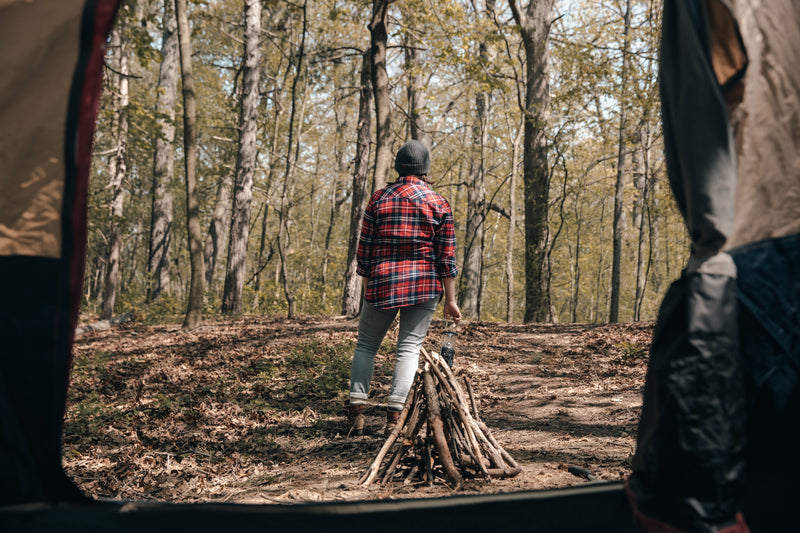
Tent Types and Styles
Camping tents come in different types and styles that match your camping style, needs, and preferences. Each tent type and style has its benefits and drawbacks and affects your camping experience and comfort. Here are some tent types and styles to consider when selecting a camping tent:
Dome Tents
Dome tents are the most common tent type and style and suitable for most camping activities and seasons. Dome tents have a rounded shape that provides good headroom and stability and withstands wind and rain. Dome tents come in different sizes and designs, with single or multiple rooms, vestibules, and windows. When selecting a dome tent, consider the tent’s size, weather resistance, ease of use, and ventilation.
Cabin Tents
Cabin tents are larger and more spacious than dome tents and provide more comfort and privacy. Cabin tents have vertical walls and a rectangular shape that maximizes the interior space and accommodates cots, air mattresses, or chairs. Cabin tents come in different sizes and designs, with multiple rooms, vestibules, and windows. When selecting a cabin tent, consider the tent’s size, weight, ease of use, and durability.
Tunnel Tents
Tunnel tents are suitable for camping in windy or harsh conditions and provide good stability and protection. Tunnel tents have a curved shape that provides good aerodynamics and resistance to wind and snow. Tunnel tents come in different sizes and designs, with one or multiple rooms, vestibules, and windows. When selecting a tunnel tent, consider the tent’s size, weather resistance, ease of use, and ventilation.
Backpacking Tents
Backpacking tents are suitable for camping on foot or in remote areas and provide lightweight and compact options. Backpacking tents have a minimalist design that prioritizes weight and portability over comfort and space. Backpacking tents come in different sizes and designs, with one or two poles, single or double walls, and vestibules. When selecting a backpacking tent, consider the tent’s weight, size, weather resistance, ease of use, and durability.
Rooftop Tents
Rooftop tents are suitable for camping on top of vehicles and provide a unique and elevated camping experience. Rooftop tents have a hard or soft shell that attaches to the vehicle’s roof rack and provides good views and ventilation. Rooftop tents come in different sizes and designs, with one or multiple rooms, windows, and awnings. When selecting a rooftop tent, consider the tent’s weight, size, vehicle compatibility, and ease of use.
Pop-Up Tents
Pop-up tents are suitable for quick and easy camping and provide an instant and hassle-free setup. Pop-up tents have a spring-loaded frame that expands and collapses the tent in seconds and eliminates the need for
Wrapping Up
Choosing the right camping tent can make or break your camping experience. A good camping tent should match your group size, gear, activities, and weather conditions and provide comfort, safety, and durability. By considering the factors and features discussed in this article, you can make an informed decision and select the perfect camping tent for your next adventure.
Don’t forget to check out our website Camping Gear Pro for more camping tips, gear reviews, and outdoor inspiration. Happy camping!
Frequently Asked Questions
Q. What factors should I consider when choosing a camping tent?
A. Consider your group size, gear, and weather conditions to find a tent that provides comfort, safety, and durability.
Q. How do I choose the right size camping tent for my group?
A. Consider the number of people, gear, and pets you will bring and choose a tent that provides enough space for everyone and everything.
Q. Who makes the best camping tents on a budget?
A. Coleman, Eureka, Alps Mountaineering, and Kelty offer affordable and durable camping tents for beginner campers.
Q. What is the difference between a camping tent and a backpacking tent?
A. Camping tents prioritize comfort and space while backpacking tents prioritize weight and portability.
Q. How do I know if a camping tent is weather-resistant?
A. Look for tents with a rainfly, waterproof floor, and sturdy poles that withstand wind and rain. Check the tent’s seasonality and temperature rating.
Q. What if I can’t decide which camping tent to choose?
A. Consider renting a camping tent first to test it out before investing in a tent. Read reviews, ask for recommendations, and consult with experts to make an informed decision.

